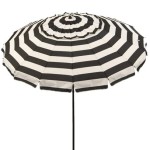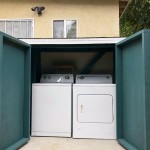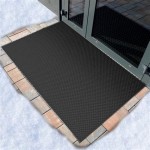Solar Powered Outdoor Pole Lights: An In-Depth Guide
Solar powered outdoor pole lights represent a significant advancement in outdoor lighting technology. They offer an environmentally conscious and cost-effective alternative to traditional grid-connected lighting solutions. These lights harness solar energy through photovoltaic (PV) cells, converting sunlight into electricity to power light-emitting diodes (LEDs). The integration of these technologies results in a self-sufficient lighting system, eliminating the need for trenching, wiring, and electrical connections, thereby simplifying installation and reducing overall operational costs.
The core principle behind solar pole lights is the photovoltaic effect. Semiconductor materials, typically silicon-based, within the solar panel absorb photons from sunlight. This absorption dislodges electrons, creating an electrical current. This direct current (DC) electricity is then stored in rechargeable batteries, usually lithium-ion or lithium iron phosphate, where it is held until needed to power the LED light. A charge controller regulates the charging and discharging of the battery, preventing overcharging and deep discharging, which can damage the battery and shorten its lifespan. At dusk, a light sensor or timer activates the LED, drawing power from the battery to illuminate the surrounding area. This process continues autonomously each day, providing reliable and sustainable lighting.
Components of a Solar Powered Outdoor Pole Light
A typical solar powered outdoor pole light comprises several key components working in concert: the solar panel, the battery, the charge controller, the LED light fixture, the pole itself, and the light sensor/timer. Each component plays a vital role in the overall performance and longevity of the system.
The solar panel is responsible for capturing solar energy. The efficiency of the solar panel directly impacts the amount of electricity generated and stored. Monocrystalline solar panels are generally more efficient than polycrystalline panels, but they also tend to be more expensive. Polycrystalline panels offer a more cost-effective solution where space is not a primary constraint.
The battery stores the electricity generated by the solar panel. Battery capacity is crucial, as it determines how long the light can operate without sunlight. Lithium-ion batteries are commonly used due to their high energy density, long lifespan, and relatively low self-discharge rate. Lithium iron phosphate (LiFePO4) batteries offer even longer lifespans and improved thermal stability, making them a preferred choice for demanding applications, despite their higher initial cost.
The charge controller is an essential component that regulates the flow of electricity between the solar panel, the battery, and the LED light. It prevents overcharging, which can damage the battery, and also prevents deep discharging, which can significantly reduce battery lifespan. Pulse Width Modulation (PWM) and Maximum Power Point Tracking (MPPT) are two common types of charge controllers. MPPT controllers are more efficient at converting solar energy into usable electricity, particularly in low-light conditions, but they are also more expensive than PWM controllers.
The LED light fixture provides illumination. LEDs are highly efficient and long-lasting, making them an ideal choice for solar powered applications. They consume significantly less energy than traditional incandescent or fluorescent lights, allowing for longer runtimes on a single charge. The brightness of the LED is measured in lumens, and the color temperature is measured in Kelvin (K). Cooler color temperatures (higher Kelvin values) provide a brighter, whiter light, while warmer color temperatures (lower Kelvin values) provide a softer, more yellow light.
The pole provides structural support for the solar panel and the LED light fixture. Poles are typically made of steel, aluminum, or composite materials. The height of the pole affects the area illuminated by the light. Taller poles provide wider coverage, while shorter poles are suitable for more localized lighting.
The light sensor or timer automatically activates the light at dusk and deactivates it at dawn. Light sensors detect ambient light levels and trigger the light to turn on when it becomes dark. Timers can be programmed to turn the light on and off at specific times, regardless of ambient light levels.
Advantages of Using Solar Powered Outdoor Pole Lights
The adoption of solar powered outdoor pole lights presents a multitude of advantages, ranging from environmental benefits to economic savings. These advantages make them an attractive alternative to conventional grid-tied lighting systems.
One of the most significant advantages is their environmental friendliness. Solar lights utilize a renewable energy source – sunlight – eliminating the need for electricity generated from fossil fuels. This reduces carbon emissions and contributes to a cleaner environment. The absence of underground wiring also minimizes disruption to the surrounding ecosystem during installation.
Cost savings are another compelling advantage. Solar powered lights eliminate electricity bills, resulting in substantial long-term savings. The initial investment in solar lights may be higher than that of traditional lights, but the elimination of ongoing electricity costs and reduced maintenance requirements quickly offset the initial expense. Furthermore, government incentives and rebates are often available to encourage the adoption of solar energy technologies, further reducing the upfront cost.
Installation is simplified with solar lights. Since no trenching or wiring is required, installation can be completed quickly and easily, minimizing labor costs and disruption to the surrounding area. This makes them ideal for remote locations or areas where it is difficult or expensive to run electrical lines. They can be easily relocated if necessary, providing flexibility in lighting design.
Maintenance requirements are generally lower for solar powered lights compared to traditional lights. LEDs have a long lifespan, reducing the frequency of bulb replacements. The batteries also have a relatively long lifespan, typically lasting several years. Regular maintenance may include cleaning the solar panel to ensure optimal performance and occasionally replacing the battery.
Safety is enhanced with solar lights. The absence of electrical wiring reduces the risk of electrical shock and fire. Solar lights operate on low-voltage DC power, which is inherently safer than high-voltage AC power. They can also provide reliable lighting during power outages, enhancing security and safety.
Applications of Solar Powered Outdoor Pole Lights
Solar powered outdoor pole lights find applications in a wide variety of settings, providing illumination for streets, parking lots, pathways, parks, and other outdoor areas. Their versatility and adaptability make them suitable for both residential and commercial applications.
Street lighting is a particularly common application. Solar powered street lights provide safe and reliable illumination for roadways, enhancing visibility for drivers and pedestrians. They are often used in residential neighborhoods, rural areas, and developing countries where access to the electrical grid is limited or unreliable.
Parking lot lighting is another important application. Solar powered parking lot lights provide security and safety for vehicles and pedestrians. They can be installed in parking lots of businesses, shopping centers, and public facilities.
Pathway lighting enhances the safety and usability of walkways, sidewalks, and trails. Solar powered pathway lights provide illumination for pedestrians, cyclists, and other users. They are often used in parks, gardens, and residential areas.
Park and recreational area lighting allows for extended use of outdoor spaces after dark. Solar powered lights can illuminate picnic areas, playgrounds, and sports fields, providing a safe and enjoyable environment for users.
Security lighting is a crucial application for deterring crime and enhancing safety. Solar powered security lights can be installed around homes, businesses, and other properties to provide illumination and deter intruders. They are often equipped with motion sensors to activate the light only when needed, conserving energy.
Emergency lighting is another vital application. Solar powered lights can provide backup lighting during power outages, ensuring safety and security. They are often used in hospitals, schools, and other critical facilities.
Remote location lighting presents an ideal use case, especially where grid connectivity is costly or impractical. Remote construction sites, mining operations, and agricultural facilities can benefit significantly from the ease of installation and self-sufficiency of solar pole lights.
Choosing the right solar powered outdoor pole lights requires careful consideration of several factors, including the desired brightness, the area to be illuminated, the climate, and the budget. Understanding these factors will ensure that the selected lights meet the specific needs and provide reliable performance for years to come.

Solar Post Lights Outdoor Lighting Lamps Plus

Tfcfl Solar Powered Outdoor Led Pillar Lamp Post Light Fence Garden Lawn Black Walmart Com

Stand Alone All In One Outdoor Front Courtyard Solar Driveway Pole Lights Led Light Integrated Made Com

Vertical Solar Garden Pole

Solar Lamp Post Lights Outdoor 2 Pack Waterproof Pole Powered Vintage Street For Garden Lawn Pathway Driveway Front Back Door Walmart Com

Solar Powered Lightpost Lights Garden Outdoor Lamp Posts Pole

Lutec 2 Light Black Cast Aluminum Solar Powered Outdoor Weather Resistant Post Set With Led Bulbs Included 6940004012 The Home

Traditional Led Lamp Post 2 1m Solar Power Large Black Outdoor Garden Pathway Drive Patio Lawn Decoration

Hardoll 15w Solar Pillar Lights For Outdoor Home Garden Waterproof Wal

Outdoor Simple Landscape Lighting Ip65 Villa Community High Pole Road Lamp Model Solar Power Led Garden Light Home Made In Com








